Wild Hearts Review: Inherited Magnificence
Ali Hasan March 13, 2023
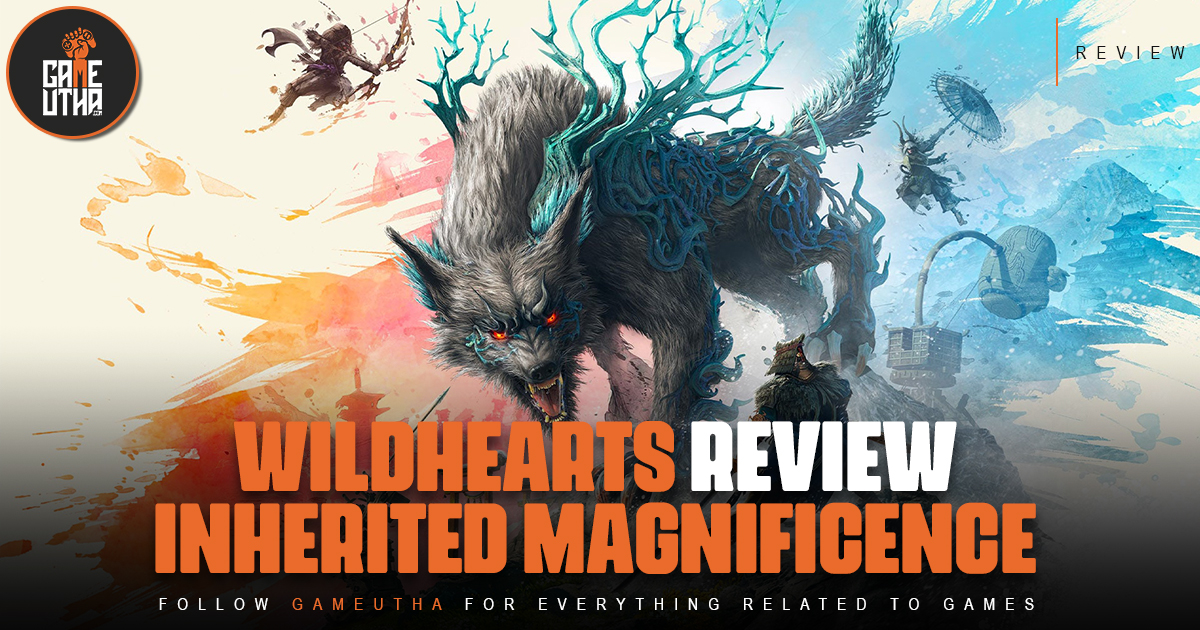
Monster Hunter has long maintained itself as the king of the Kaiju hunting genre. The series has established and broken conventions for the genre, creating a very specific niche in its first few years and then with its latest two entries, Monster Hunter World and Monster Hunter Rise successfully bringing it to the mainstream. Many games have tried to mimic the grandiose nature of hunting monsters but nothing has come even close to replicating what Capcom has achieved over the last two decades, until now. Wild Hearts is Dynasty Warrior’s developer Omega Force’s take on the beloved Monster Hunter formula. Wild Hearts takes the conventions and systems of Monster Hunter and builds upon them in an attempt to set it itself apart from what came before.
Wild Hearts doesn’t shy away from taking that already great formula and running with it, while it does make a few fundamental changes to distinguish itself it does so more subtly than one would expect and what I had imagined. There are moments where you feel like you’re playing the next entry in the monster hunter series but that isn’t necessarily a bad thing, it just further highlights the way in which subtlety can be used to highlight an already established formula that works while also showing ways in which it can be improved upon.
Table of Contents
Wild Hearts doesn’t feature a robust story and it doesn’t need to
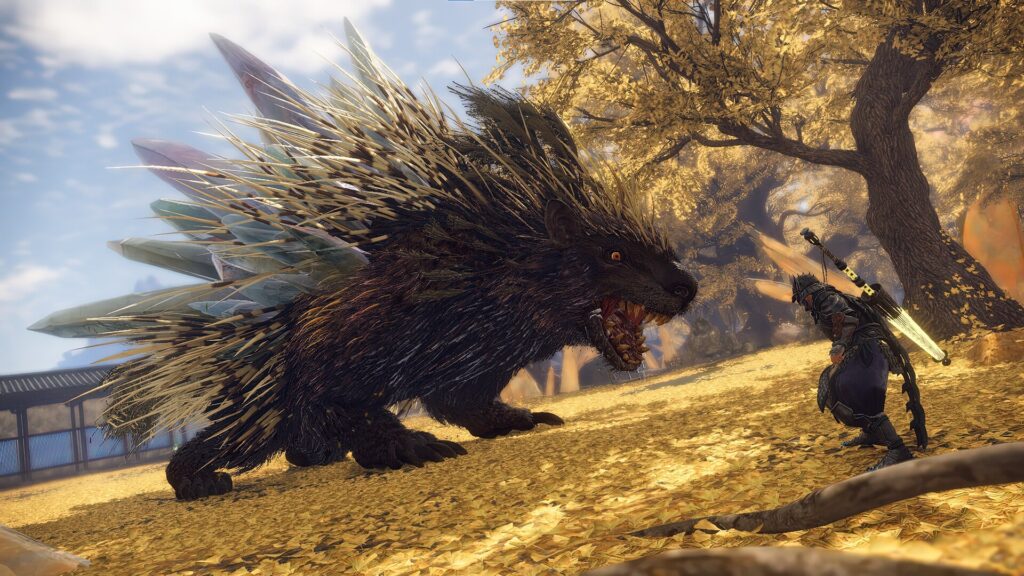
Like Monster Hunter, Wild Hearts doesn’t feature a captivating narrative to hook you in. There isn’t an opening cinematic or a long drawn-out title sequence, to introduce you to the world and lore, instead, the game takes absolutely no time in putting you on the sticks. These games are mostly known for their spectacle and gameplay loop and throwing the player right into the action seemed like the logical thing to do, at least from my perspective as the narrative does little to carry these games. The story setup is fairly straightforward, however.
The game takes place in Azuma, a fictional setting in Feudal Japan where, you, a nameless hunter are tasked with protecting your home as the threat of giant monsters (known as the Kemono) looms in the distance. The story mainly has you hunting Kemono throughout the four regions of Azuma with the occasional pop of character development and story beats. The latter are far and few between but that’s okay because the action and spectacle of taking out the Kemono is really what the game is all about. This is apparent not only because the fights themselves are so well made but because you’ll often forget you’re following a story in the first place.
The Kemono come in all different shapes, sizes, and flavors
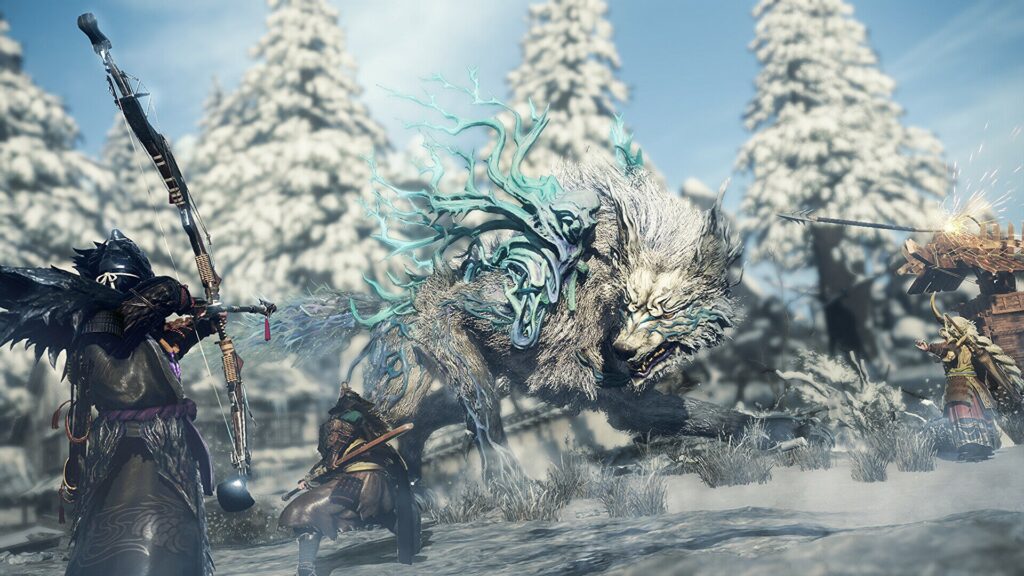
The Kemono you come across in Wild Hearts come in all different, shapes, sizes, and flavors. Each Kemono is fused with a specific element allowing them to deal damage accordingly. Whether it’s the Kingtusk, the Lavaback, or the Deathstalker there is plenty of variety on display, each monster even has a couple of subvariants allowing for somewhat unique encounters every single time. Each Kemono has its own unique attack patterns and weaknesses and it is ultimately learning and mastering these facets that net you a victory in battle. In many ways, these battles almost reminded me of the boss battles in the Dark Souls games in that you really have to consider and study your adversary, study their movement, and the many nuances they have before you can claim victory.
The game also encourages you to delve into side quests. More often than not you’ll find yourself too weak to take on one Kemono after another. Leveling up your character, and acquiring new gear and perks is the only way you’ll be able to do it. At times it did feel like padding but since most, if not all main quests follow pretty much the same structure but they did work well enough to break the monotony of strictly hunting monsters.
Wild Heart’s combat is its strongest feature
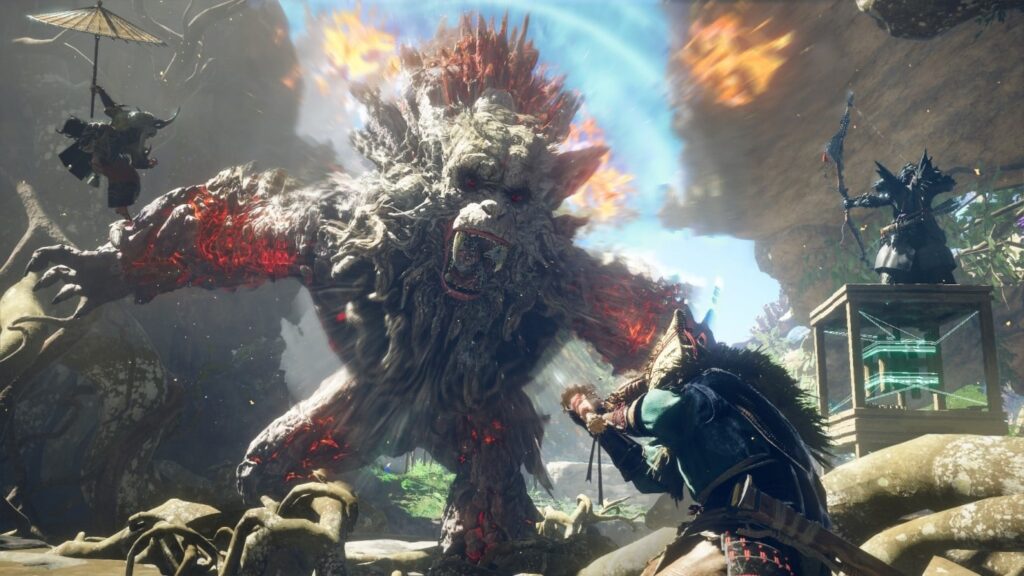
The combat is probably the meat of the Wild Hearts experience and serves as a very good compliment to its creature design and arena layout. You have a number of weapons at your disposal, each catering to a specific playstyle. Whether you want a heavy and hard-hitting weapon at the cost of mobility or a swift one that allows you to maneuver around the battlefield more quickly you’ll have plenty to choose from. I personally settled with the katana with its easy-to-use move set and quick mobility but did find myself enjoying the bladed Wasaga an umbrella that also doubles as a weapon and places an emphasis on parrying.
Perhaps the biggest departure from other monster-hunting games is Wild Hearts’ use of Karakuri. Karakuri are buildable structures that you can use during combat. They range from simple wall structures that can be used to defend against attacks to launching pads that allow for quick getaways. As you progress through the story you unlock Karakuri fusions which allow you to craft bombs and other offensive objects which can quickly turn the tide of combat whenever you’re in a pickle. The Karakuri system really does add a sense of depth to the combat and steepens the learning curve a bit but more importantly, it gives the game identity, it’s the farthest thing from the Monster Hunter games yet it feels quite at home here.
These Karakuri also serve as a utility, allowing you to place down crafting benches, zip lines, and more throughout the world. These structures not only serve as a way to solve environmental puzzles and challenges but I found they also added depth to the overall game world because they remain erect as long as they’re not destroyed and when you join a friends game you can view the karakuri’s they’ve already placed into the world and also see ones that were recently destroyed.
Progression feels connected and consequential
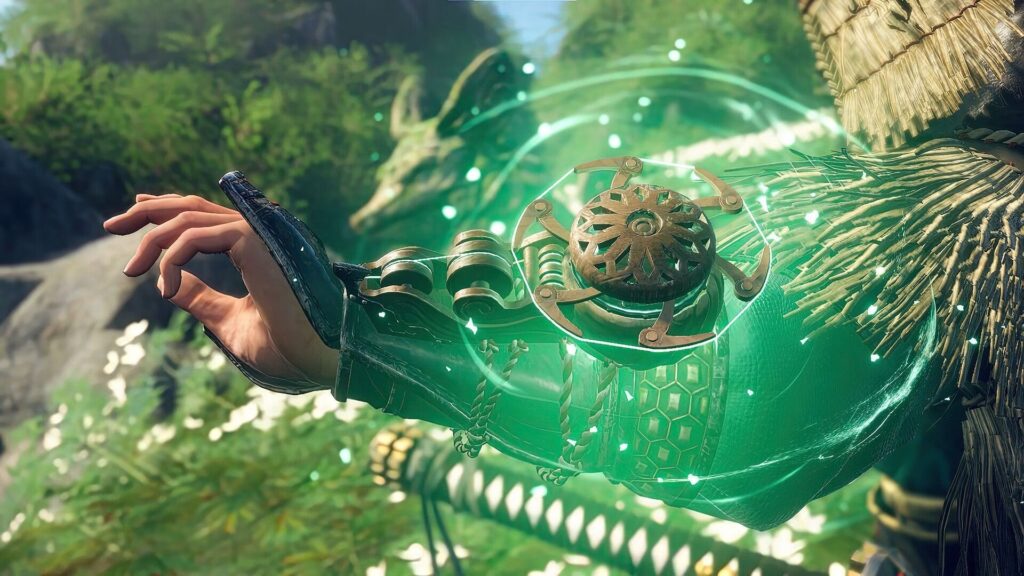
Wild Hearts features a fairly straightforward progression system. Killing Kemono allows you to craft stronger weapons and gear pieces that aid you on your monster-hunting journey as you progress through the game. One thing the game does very well is its use of inherited and inherent skills. Simply put inherent skills come attached to any new weapon you craft while the inherited skills are ones that are carried over from the previous version of the weapon. More often than not looting or crafting systems often leave you feeling like the previous weapon you crafted was wasted in favor of the new one but here it feels like you’re building towards something and not just jumping from one weapon to another. It also allows you to craft extremely unique weapons that cater to you personally, the possibilities are quite literally endless in this regard.
If you want to build a weapon that is adept at parrying you can choose to invest in parrying skills but if you prefer a more cut-throat approach you can invest in damage multipliers, the game allows you the freedom to create a weapon that is your uniquely your own in a system that actually pays off. The game does, however, require quite a bit of material to craft/upgrade weapons and gear pieces which can get a little grindy at times, certain materials are only found in certain locations which can make throw the entire pacing off quite a bit. While it isn’t something that bothered me too much I can definitely see it being a problem for other players.
Verdict
Wild Hearts puts a fun new twist on the Monster Hunter formula, the game combines large-scale battles, robust crafting systems, and exciting combat scenarios to combine fresh with familiar in a largely satisfactory package. The crafting system is a definite highlight as is the Karakuri, although the gritty nature to craft items can get a bit too tedious.
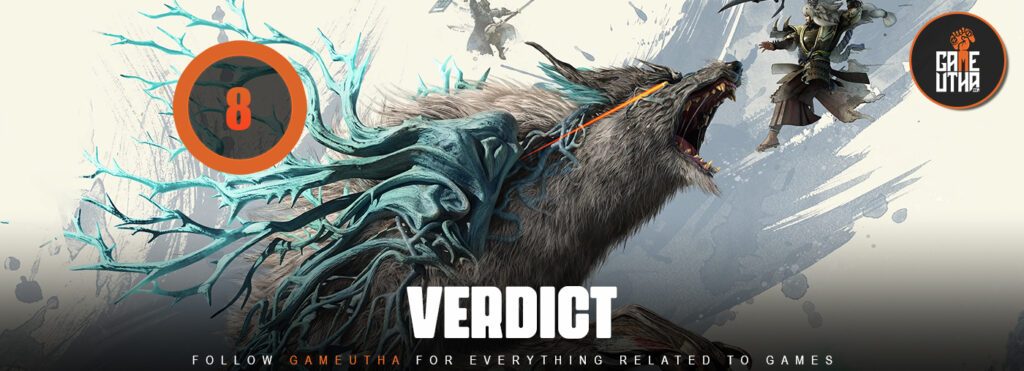
Experience the bombastic nature of Wild Heart’s combat today by picking up a PS5 or Xbox Series X from our featured ads! Gameutha.com is Pakistan’s largest dedicated marketplace featuring game consoles, accessories, and games. Gameutha is also home to the latest and greatest in gaming news, reviews, and updates!